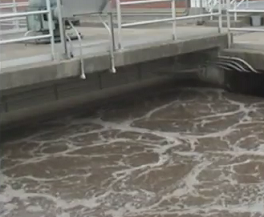 Sludge Bacterial Seeding is often used to jumpstart the biological system, or in situations when the whole process encounters complete failure and unable to breakdown organic waste efficiently. Sometimes there are also conditions whereby SVI becomes a problem due to excessive growth of unwanted microorganisms, the most common is the propagation of filamentous bacteria and as such, this calls for the need to replace the system with the desired sludge and out compete the current ones. Usually there are two approaches involved, one is the dry seeding using prepared bacteria cultures in powder form (also called bioaugmentation) and another is the wet seeding meaning that the sludge is obtained from an existing wastewater treatment plant.
Sludge Bacterial Seeding is often used to jumpstart the biological system, or in situations when the whole process encounters complete failure and unable to breakdown organic waste efficiently. Sometimes there are also conditions whereby SVI becomes a problem due to excessive growth of unwanted microorganisms, the most common is the propagation of filamentous bacteria and as such, this calls for the need to replace the system with the desired sludge and out compete the current ones. Usually there are two approaches involved, one is the dry seeding using prepared bacteria cultures in powder form (also called bioaugmentation) and another is the wet seeding meaning that the sludge is obtained from an existing wastewater treatment plant.There are few aspects to consider before selecting the sludge seed from a facility. If you are seeding for suspended growth aeration pond, make sure to obtain the seeds from the system with the same working principle. Similarly that applies as well for the other treatment process such as the attached growth system, membrane bioreactors (MBR) or anaerobic reactors so that you will most likely ended up having the same type of bacteria that can adjust to your treatment condition. There are other aspects that need to be evaluated as well. The most important is by examining the history of the biological system and find out what type of foods are commonly fed to the bacteria. For example if you own an effluent plant that deals with wastewater coming from oil refinery, trying to reseed the whole biological system using bacteria from totally different field like the pharmaceutical wastewater (which contains very little suspend solids), that would have very low success rate. Most often the bacteria will die off in just a matter of days and that will lead to even bigger problem dealing with the bulk of dead biomass. It does make sense to obtain bacteria from same treatment plant within the circle of same industries because as explained earlier, you will want to have the right type of bugs to start with that can easily acclimatize to the influent.
Other parameters that you should also take in account are the SVI (sludge settleability), SOUR (oxygen uptake rate that determines how efficient the bugs are), Sludge age and the pH as time is very crucial here and you will need to have the system up and running as soon as possible. Usually a simple calculation has to be performed in order to get the right concentration of solid biomass concentration in the system and what you need to do is basically measure the concentration of sludge seeds that you are getting and then determine what is the final concentration that you hope to achieve. For example:
Volume of the activated sludge aeration pond: 1500 cubic meters equivalent to 150000 liters
Final concentration of sludge solid measured in MLSS: 3000mg/L
Concentration of the influent seeds supplied: 20000mg/L
Amount of solid needed based on volume measured against the desired sludge concentration: 4500kg
Therefore in order to get 4500kg of solids, you will need to pump in about 4500kg/20 = 225 cubic meters of seeds.
Overall, this would represent adding 5% of the aeration pond volume which would the ideal figure. Normally adjustment should not go over 10% of the overall volume of the aeration pond itself.
Comparing between the dry and wet seeding, basically there is no specific method which can claim to perform better than the other. In dry bacteria seeds, recent advancement in the bioaugmentation technology has made the whole process viable with high percentage of success rate. Depending on which company that produces the bacteria culture, some can even provide a guarantee that it will work due to the specific strains of bacteria it contains and of course this comes with a certain cost that you will need to pay for. On the contrary, using the wet seeding method, it all depends on where you can find the right and suitable type of bacteria and basically, the availability and the quality of the seeds are the issues involved. All in all, starting a whole system from scratch will take months of work and you will constantly need to monitor development of the right bacteria but through seeding, the whole process usually takes about a week or two to stabilize.


